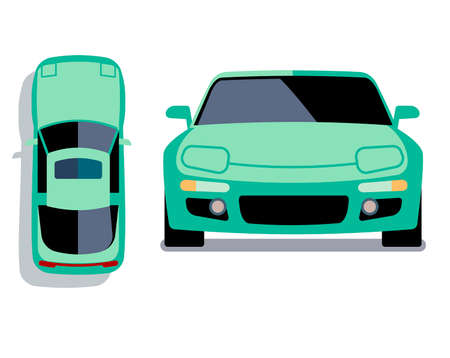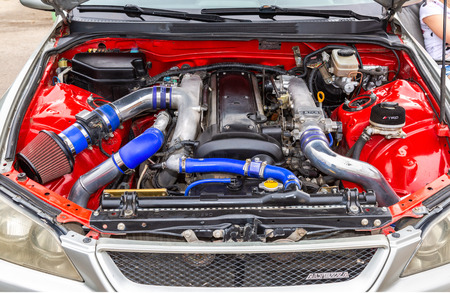1. Introduction
Electric vehicles (EVs) have come a long way, offering both impressive performance and outstanding efficiency. However, there is an ongoing debate among EV enthusiasts and buyers—should you prioritize performance, or is efficiency the smarter choice? Finding the right balance between the two is crucial as it impacts driving experience, energy consumption, and overall cost of ownership.
Why Does the Balance Matter?
Performance-focused EVs deliver rapid acceleration, high top speeds, and dynamic handling, making them exciting to drive. On the other hand, efficiency-focused EVs maximize range, reduce charging frequency, and often come with lower operating costs. The ideal EV finds a middle ground, offering both thrilling performance and practical efficiency.
Performance vs. Efficiency: Key Differences
| Aspect | Performance EVs | Efficiency EVs |
|---|---|---|
| Acceleration | Extremely fast (0-60 mph in seconds) | More moderate, prioritizing smoothness |
| Battery Consumption | Higher due to power demands | Optimized for longer range |
| Driving Experience | Sporty, engaging, high-speed capable | Relaxed, steady, long-distance friendly |
| Range | Typically shorter due to power usage | Longer, designed for efficiency |
The Future of EV Balance
With advancements in battery technology and powertrain efficiency, automakers are working to bridge the gap between performance and efficiency. Many new models feature dual-motor setups, adaptive driving modes, and regenerative braking systems to optimize both aspects. The goal is to create EVs that provide exhilarating performance without sacrificing efficiency.
2. Understanding Performance in EVs
When it comes to electric vehicles (EVs), performance is a critical factor for many drivers. But what exactly defines an EV’s performance? Several key aspects contribute to how an EV feels on the road, including acceleration, horsepower, torque, and handling. Let’s break down each of these elements.
Acceleration: The Instant Power Surge
One of the biggest advantages of EVs over traditional gas-powered cars is their lightning-fast acceleration. Unlike internal combustion engines that take time to build up power, EVs deliver torque instantly, resulting in rapid acceleration.
How Does Acceleration Compare?
| Vehicle Type | 0-60 mph Time |
|---|---|
| Standard Gasoline Sedan | 6-8 seconds |
| Mid-Range EV | 5-6 seconds |
| High-Performance EV | Under 3 seconds |
As seen in the table, high-performance EVs can achieve remarkable acceleration times, rivaling some of the world’s fastest sports cars.
Horsepower: More Than Just a Number
Horsepower measures an EVs ability to sustain speed and deliver high performance over longer periods. In EVs, the efficient power delivery from electric motors means that even a moderately powered EV can feel quick.
Torque: The Secret Behind EVs’ Speed
Torque is what gives an EV its powerful push off the line. Since electric motors provide maximum torque from a standstill, EVs feel incredibly responsive and strong at any speed.
EV Torque vs. Gas-Powered Cars
To illustrate how torque plays a role, consider a comparison:
| Vehicle Type | Torque Output |
|---|---|
| Conventional Sedan | 180-250 lb-ft |
| Standard EV | 250-400 lb-ft |
| High-Performance EV | 600+ lb-ft |
This high torque output translates to thrilling acceleration and smooth power delivery.
Handling: The Balance of Control
Performance isnt just about straight-line speed. An EV’s handling determines how well it grips the road, maneuvers through turns, and provides a confident driving experience. Factors such as battery placement (which lowers the center of gravity), weight distribution, and suspension tuning all play crucial roles in how an EV performs on tight corners.
By understanding these key aspects—acceleration, horsepower, torque, and handling—you can get a better sense of what makes an EV truly perform at its best. In the next section, we’ll explore how efficiency balances with these performance factors.

3. Three, The Role of Efficiency in EVs
When it comes to electric vehicles (EVs), efficiency plays a crucial role in determining their overall performance and practicality. While speed and acceleration are exciting, an EVs efficiency directly impacts range, energy consumption, battery longevity, and even aerodynamics. Lets take a closer look at these key factors and how they contribute to an optimal balance between performance and efficiency.
Range: How Far Can You Go?
One of the biggest concerns for EV buyers is range—the total miles an EV can travel on a single charge. A more efficient electric motor and battery system means that the car can travel farther without requiring frequent recharging. Factors like battery capacity, driving habits, and climate conditions influence range, making efficiency a top priority for everyday usability.
Energy Consumption: Getting the Most Out of Battery Power
Unlike gasoline vehicles, EVs rely entirely on battery power, making energy consumption a critical factor. Lower energy consumption per mile results in more miles per charge, reducing the need for frequent charging sessions. Manufacturers achieve better efficiency by optimizing battery management systems, regenerative braking, and power delivery mechanisms.
Battery Technology: The Heart of Efficiency
Battery advancements are continually improving efficiency in EVs. Innovations such as solid-state batteries, improved lithium-ion cells, and better thermal management systems increase energy density while reducing weight and charging time. A more efficient battery not only extends driving range but also enhances long-term durability.
Battery Technology Comparison
| Battery Type | Energy Density | Charging Speed | Efficiency |
|---|---|---|---|
| Lithium-Ion | High | Fast | Good |
| Solid-State | Very High | Faster | Excellent |
| Nickel-Metal Hydride | Lower | Slower | Moderate |
Aerodynamics: Cutting Through the Air Efficiently
The way an EV moves through the air directly influences its efficiency. A sleek, aerodynamic design reduces drag, allowing the car to travel farther using less energy. Features like a low drag coefficient, active grille shutters, and smooth underbodies help improve overall efficiency, making aerodynamics just as important as battery performance.
Efficiency: A Key Factor in Picking the Right EV
For buyers looking for an EV that balances performance and practicality, efficiency is a major factor. The right combination of extended range, low energy consumption, advanced battery technology, and aerodynamic design ensures an EVs usability in daily driving while maintaining an exciting driving experience. As technology advances, automakers continue to push the limits of efficiency without compromising on speed and power.
4. Striking the Right Balance
Choosing an electric vehicle (EV) often involves finding the perfect mix of performance and efficiency. Some models focus on raw power, while others prioritize extended range and energy conservation. Automakers are continuously refining EVs to achieve an ideal balance, offering consumers options that cater to different needs. Let’s take a look at some models that stand out in their ability to blend both power and efficiency.
Comparing EV Models
To better understand how different EVs strike a balance between performance and efficiency, here’s a comparison of some of today’s top models:
| Model | Horsepower | 0-60 mph (sec) | Range (miles) | Energy Efficiency (MPGe) |
|---|---|---|---|---|
| Tesla Model 3 Performance | 455 hp | 3.1 | 315 | 113 |
| Lucid Air Grand Touring | 819 hp | 3.0 | 516 | 131 |
| Porsche Taycan 4S | 482 hp | 3.8 | 246 | 79 |
| Ford Mustang Mach-E GT | 480 hp | 3.5 | 270 | 84 |
Understanding Trade-offs
EV manufacturers face a trade-off between maximizing performance and optimizing efficiency. High-performance models offer exhilarating acceleration but may sacrifice range due to increased energy consumption. On the other hand, efficiency-focused EVs can travel longer distances per charge but might lack thrilling speed.
Battery and Motor Advancements
New battery technologies and improved motor efficiency are helping to close this gap. Lighter battery packs with increased energy density allow for better range without compromising power. Similarly, advanced motor designs improve energy conversion, making EVs perform better without excessive energy drain.
Regenerative Braking and Aerodynamics
Some EVs incorporate regenerative braking and aerodynamic designs to improve efficiency without reducing performance. Regenerative braking captures energy typically lost during deceleration, feeding it back to the battery. Aerodynamic body shapes minimize resistance, helping the vehicle maintain speed with less energy expenditure.
Finding the Best Fit
Ultimately, the right EV depends on individual preferences. Those seeking a high-speed, performance-oriented experience may opt for models like the Tesla Model 3 Performance, while drivers looking for maximum range and efficiency might prefer the Lucid Air Grand Touring. Advances in EV technology continue to bridge the gap between these two priorities, offering exciting possibilities for the future.
5. Conclusion
When choosing an electric vehicle (EV), finding the right balance between performance and efficiency is key. Some drivers prioritize speed, acceleration, and handling, while others focus on maximizing range and energy savings. Understanding your own driving needs will help you make the best decision.
Performance vs. Efficiency: Which One Matters More?
If you enjoy spirited driving, quick acceleration, and dynamic handling, you might lean toward a high-performance EV with a powerful drivetrain. If reducing charging stops and maximizing range is your priority, an efficiency-optimized EV may be a better fit.
How to Choose Based on Your Needs
| Driving Preference | Recommended EV Type |
|---|---|
| Long road trips, commuting, and fuel savings | High-efficiency EV with extended range |
| Sporty driving, quick acceleration, and performance | High-performance EV with powerful motors |
| A balance of both performance and efficiency | An EV with a well-rounded design and adaptive driving modes |
Final Thoughts
Theres no one-size-fits-all answer to the perfect EV, as it ultimately depends on your lifestyle and driving habits. If you frequently take long trips, an efficient EV with a larger battery capacity will ensure you go further on a single charge. If you crave power and excitement, a performance EV will deliver an exhilarating driving experience. Fortunately, many modern EVs offer a good mix of both, giving consumers flexibility in their choices.
Before making your decision, test drive different EV models and compare specs to see which one aligns best with your priorities. Whether you choose performance, efficiency, or a balance of both, todays EV options provide excellent choices for all types of drivers.


